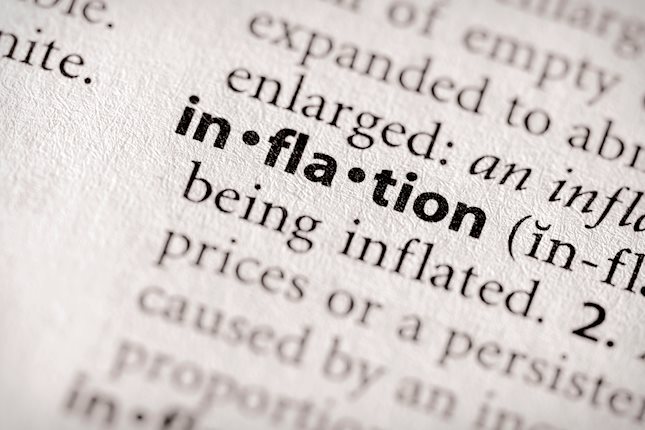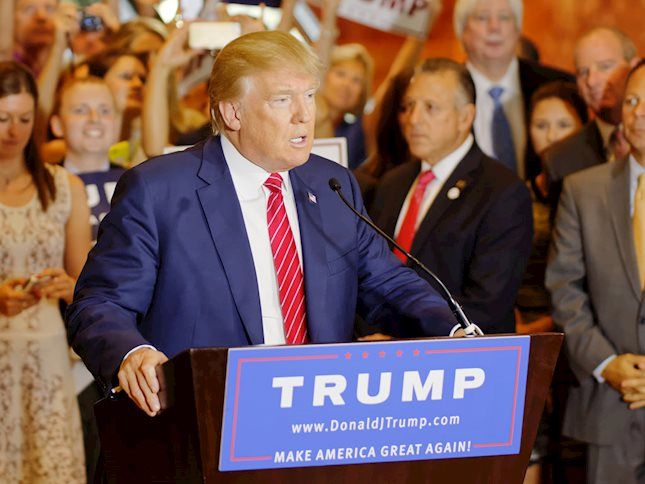This week will be dominated by politics, firstly, the results of the first round of voting for the French National Assembly, and secondly, the outcome of the UK election. The French election results have led to a sigh of relief from financial markets, and the euro is higher at the start of this week and European stock futures are also pointing to a positive open later today, including a large gain for the Cac 40.
Although Marine Le Pen’s party won the largest share of the vote, the second round of voting could prove tricky for the Far Right to win an outright majority. President Macron has called for an alliance of parties to block Le Pen, and a leftist alliance has also appealed to members to block Le Pen. This increases the chance of a hung parliament in France, which would be messy, but could be favorable to the radical policies of the Far Right.
The pound is also rallying as we move towards election day on July 4th. The UK’s general election does not, at this late stage, look like it will throw up any big surprises. The latest poll tracker from The Sunday Times, which was updated on 30th June, shows Labour on track to win 40% of the vote, with the Conservatives on 20% and Reform on 17%. The Reform party has split the Tory vote, which is likely to prove too big a challenge to come back from. Ahead of this election, the markets have been calm in the face of a change in leadership of the UK government. History tells us that a change of the party in power tends to be good news for UK equities. Ahead of this Thursday’s election, the FTSE 100 has recorded a decent first half performance. It rose by 4.8% on a currency adjusted basis, lower than the 5% increase for the Eurstoxx 50 index, and well below gains for US indices, the S&P 500 rose by 14.5% in H1, the Nasdaq rose by a hefty 18%. While the FTSE 100 has long been a global underperformer vs. other developed markets, we will be watching the advancers/ decliners ratio, which has fallen in the past week, as there are signs of a growing number of declining stocks on the UK index. If this continues, then it may suggest some risk aversion for UK stocks in the lead up to this election.
A better gauge of a political risk premium for UK asset prices is the pound and the UK Gilt market. The pound is the best performer so far this year vs. the USD in the G10 FX space, although GBP/USD has fallen 0.6%. UK Gilt yields are also stable, the 10-year yield is higher by more than 60 basis points this year, however, the 10-year US Treasury yield is not far behind, rising more than 50 basis points so far in 2024. The French 10-year yield is higher by 73 bps YTD, which suggests that UK sovereign bond yields are not a global outlier caused by our upcoming election.
The UK’s FTSE 100’s performance was better than the French Cac 40. It fell 3.77% in H1, after a sharp fall for French banks in the past month. French banks are not the only domestic companies that are under pressure so far this year, Carrefour, Engie and Teleperformance are in the top ten worst performers in the Cac 40 in Q1.
As we move into Q3, the focus will shift to the US election, which has taken on a new dimension since the Biden/ Trump debate, with several media outlets calling for President Biden to retire from the race and allow a more youthful and coherent candidate to take his place. This would be an unusual move, but the polls since the debate last week show former President Trump nearly doubling his lead over Biden. According to online pollster FiveThirtyEight.com, Trump is leading Biden by 41.7% of the vote, versus 40.4% of the vote for Biden. The margin is still slim, but it has doubled since the debate, suggesting that voters are concerned about the Democratic candidate. Biden is still popular with young voters, and the Democratic party could risk internal strife if they changed their Presidential candidate/ Biden steps down, this close to the election. The question for investors is whether the US election even matters for US asset prices due to the dominance of US stocks and the dollar? The dollar does not look like it will be replaced as the global reserve currency any time soon, and for now, financial markets are willing to overlook the US’s near 6% budget deficit. Also, US stocks have the highest market capitalization in the world at 61% of global market cap. This has grown from 40% in 2008, and has continued to expand through three presidents, two Democrats and one Republican. Thus, as US stocks have garnered more dominance in financial markets, they may become immune to political changes and scuffles leading up to an election. For example, will a new Democratic candidate alter global demand for AI? If you think not, then US stocks may continue to do well in H2.
Elsewhere, economic data will also be back in focus this week. We give our view on the three main economic events to watch in the next 5 days below.
US FOMC Minutes
The FOMC minutes for the June 11-12th meeting could be the decisive factor for whether US stock market gains can broaden out for the rest of this year. The market is expecting some more colour on FOMC members’ views about the restrictiveness of policy, and whether a rate cut in September is a reasonable prediction. The market is currently pricing in a 56% chance of a September rate cut. The FOMC lowered their projections for 2024 rate cuts when they met last month, although since then core PCE data has come in cooler than expected, which has opened the door once more to rate cuts in early Autumn. Fed speakers this week, including Jerome Powell who speaks alongside Christine Lagarde in the beautiful backdrop of Sintra in Portugal on Tuesday, are also worth watching. Will Lagarde and Powell boost hopes of near-term rate cuts? If yes, this could boost risk sentiment, in what is set to be a choppy week full of political risks.
US jobs data
We get multiple data points on the US labour market this week, culminating with the Non-Farm Payrolls report this Friday. Economists are currently predicting a reading of 190k for June, sharply lower than the 272k reading in May. Jobs gains are expected in the healthcare sector and in recreation and leisure sector, which has tended to absorb an increase in the US immigration rate in recent years. However, the household survey could show that a large chunk of jobs gains are part time roles, so the US labour market may not be as strong as the headline payrolls figure suggests and we could get more mixed messages from last month’s jobs data. The unemployment rate is expected to remain steady at 4%, but if it ticks up for the third straight month, then recession risks will start to mount. Wage growth is also expected to moderate last month and fall to a 3.9% annual rate down from a 4.1% annual rate in May. Jolts job openings is another key labour market indicator looked at by the Fed, which is released on Tuesday. It is expected to show a moderation to 7.86mn job openings for May, down from 8.05mn in April, which is the lowest level since early 2021, and may start to give hope that the labour market is returning to pre-covid norms. Signs of the labour market cooling in the US could have a big market impact, especially for the yen. Arguably, the timing of US rate cuts could do more to weigh on the dollar, than miniscule action from the BOJ to boost the yen. USD/JPY remains close to its highest level since the early 90s, however, it backed away from 161.00 after Friday’s moderation in core PCE. If we get weaker than expected jobs data, then this pair could fall sustainably back below 160.00, which may negate the need for official Japanese intervention to stem yen weakness.
China data
China’s PMIs showed a mild contraction in the manufacturing sector for June, and the service sector PMI fell to 50.5, from 51.1 in May. This adds to the low confidence levels in the economy and adds to concern about the fading economic strength of the world’s manufacturing powerhouse. China’s indices were relatively flat after this data; however, Chinese and Hong Kong stock markets rose by 1% and 3% in the first half of the year, below gains for the US and European indices, which suggests underlying concerns about China’s economic strength are weighing on investor sentiment. There is also growing concerns about the shrinking current account balance in China. Its fallen sharply in the last year and in Q1 it was equivalent to 1.22% of China’s GDP. The concern is that this signals capital flight from the country, especially as the trade balance has risen recently. A weaker China bolster’s the US as the world’s most important economy, which could weather whatever happens in the US Presidential race in the coming days.
CFD’s, Options and Forex are leveraged products which can result in losses that exceed your initial deposit. These products may not be suitable for all investors and you should seek independent advice if necessary.
Recommended Content
Editors’ Picks

EUR/USD stays vulnerable near 1.0600 ahead of US inflation data
EUR/USD remains under pressure near 1.0600 in European trading on Wednesday. The pair faces headwinds from the US Dollar upsurge, Germany's political instability and a cautiou market mood, as traders look to US CPI data and Fedspeak for fresh directives.

GBP/USD trades with caution below 1.2750, awaits BoE Mann, US CPI
GBP/USD trades with caution below 1.2750 in the European session on Wednesday, holding its losing streak. Traders turn risk-averse and refrain from placing fresh bets on the pair ahead of BoE policymaker Mann's speech and US CPI data.

Gold price holds above $2,600 mark, bulls seem non committed ahead of US CPI
Gold price staged a modest recovery from a nearly two-month low touched on Tuesday. Elevated US bond yields and bullish USD cap gains for the non-yielding XAU/USD. Traders now look forward to the key US Consumer Price Index report a fresh impetus.

US CPI data set to confirm inflation ramped up in October as traders pare back Fed rate cut bets
As measured by the CPI, inflation in the US is expected to increase at an annual rate of 2.6% in October, a tad higher than the 2.4% growth reported in September. The core annual CPI inflation, excluding volatile food and energy prices, will likely remain at 3.3% in the same period.

Forex: Trump 2.0 – A high-stakes economic rollercoaster for global markets
The "Trump trade" is back in full force, shaking up global markets in the aftermath of the November 5th U.S. election. This resurgence has led to substantial shifts in both currency and bond markets, with the U.S. dollar index (DXY) jumping 2.0% + since election day.

Best Forex Brokers with Low Spreads
VERIFIED Low spreads are crucial for reducing trading costs. Explore top Forex brokers offering competitive spreads and high leverage. Compare options for EUR/USD, GBP/USD, USD/JPY, and Gold.